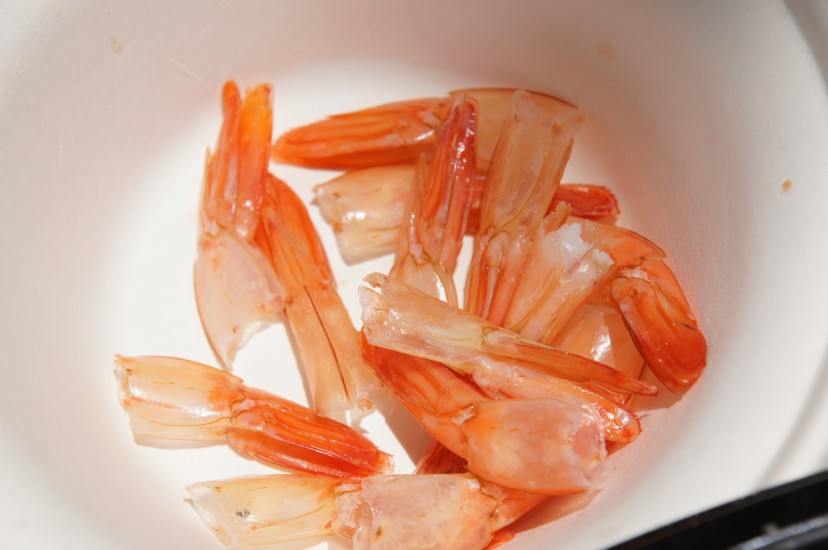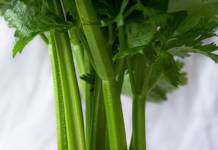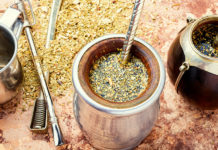‘Tis the season for gift giving, holiday parties, and feasts that can last for days. One thing that may not be on your mind when you reach toward the holiday spread is the safety and preparation of the food laid out to eat. Many families traditionally make shellfish and seafood dishes including shrimp for their holiday appetizers, but how safe are the shrimp you are eating? Let’s debunk some of the myths and share the facts about shrimp safety before you mix up the cocktail sauce for the big party.
Americans consume more shrimp than any other seafood, according to Prevention magazine. Comparatively, shrimp consumption in the U.S. is double that of any other seafood, yet almost all of it (1.2 billion pounds per year eaten) is imported from foreign shrimp farms. As with any cultivation or farming practice, some are better for the environment than others, yet many consumers don’t understand the true story behind where their food comes from. Many of the methods are complicated means to deliver the shrimp to the stores, and by exploring these more in-depth, you can ensure that the food that you are serving or eating is safe for you and the environment.
Damage Caused By Shrimp Farming
The environmental issues with shrimp farming are different than other seafood problems. Due to the abundance and fertility of shrimp, over-fishing is not the main concern. However, due to the small size of the shrimp themselves, the fishing nets that are used often trap other sea creatures, killing them in the process.
Trawling for shrimp can also cause damage to the ocean floors and ecosystems if not managed properly. Shrimp farms often require large amounts of clear ocean floor areas. The feed used leaves the outbound waters polluted. Possibility of disease, pollutants, and escape are vast for this method. The implications of damaging large sections of the ocean could be paramount for other ecosystems causing widespread irreparable damage.
Best Types Of Shrimp To Buy
So how to do you know which store-bought shrimp are best to buy? Here are a few tips to follow when selecting shrimp and seafood at the grocery store.
Species of Shrimp
With over 300 different species of shrimp in the world, only six varieties are typically found in United States markets:
-
Gulf White
Most expensive, great flavor, firm texture, and usually grayish white in color. These are top notch shrimp, which look similar to the less appealing Gulf Brown Shrimp. Make sure before choosing these, you look carefully at the label and ask for help from a store associate if needed!
-
Ecuadorian or Mexican White
Similar to Gulf whites, these may be wild (most Mexican) or farm-raised (all Ecuadorian). More Ecuadorian shrimp are imported to the United States than any other.
-
Black Tiger
Farmed shrimp from Asia, these may have black stripes with gray bodies. They are pink when cooked and quite flavorful. These can be firm as well, but many times inconsistent in color, taste, and quality.
-
Gulf Pink
Wild or farm-raised and very high quality of shrimp. This variety can be expensive, and redder than Gulf White.
-
Gulf Brown
These shrimp are reddish brown and can be easily confused with the other Gulf varieties. Often tasting of iodine and less quality, these are not the best variety to purchase.
-
Rock Shrimp
Found in the mid-Atlantic, southern states, and Gulf of Mexico; this variety is often found cooked and peeled because of the difficulty in peeling and deveining them.
-
Chinese White
An inexpensive variety and known for it’s mild flavor, this type of shrimp is a popular variety to purchase. The texture is soft, and sometimes watery. The color is grayish white.
For the “greenest” options of wild caught shrimp, Seafood Watch recommends either Oregon Pink Shrimp or Pacific Northwest Spot Prawn from British Columbia. The Gulf of Mexico is a large producer of shrimp, and for this reason it is in the highest need of support. The most important thing to focus on while purchasing shrimp is the location that it’s farmed. Country of origin labeling is on each package of shrimp. Purchasing North American farmed shrimp is the best option for conservation of the oceans and sustaining the regional shrimp farming businesses.
Are Gulf Shrimp Safe To Eat?
After the BP oil spill in 2010, the ecological balance of the marine life of the Gulf of Mexico was highly disturbed. However, since then, the shrimp that are caught and farmed from the Gulf are highly inspected, now more than ever before. The National Oceanic and Atmospheric Administration and the FDA re-wrote the regulations for food testing in the Gulf. This means that while the shrimp from this region get some of the highest level of inspection, foreign imported shrimp does not get the same treatment.
Where To Buy?
Many grocery stores also have strict standards about where the shrimp that they sell are being obtained. Grocery stores like Whole Foods, Wegmans, Safeway, Target, and Wal-Mart all have strict guidelines relating to seafood. In order to ensure that you are purchasing seafood and shrimp that is safe and environmentally sound, check labels and grocery store websites that list ingredients and guidelines. Another good practice is to ask questions while eating out at restaurants. Do not assume what you’re eating is safe and from a certain area, always ask the waiter or chef if you have any questions.
Shrimp Preparation At Home

Despite taking precautions at the grocery store, preparing the shrimp and taking precautions at home is also an important step to staying safe while enjoying seafood or shellfish. Following these steps will ensure that you and your party guests have delicious shrimp without ending up sick as the party favor.
- Shrimp should have no black spots or melanosis on their shells. This would indicate that breakdown of meat has begun and the shrimp is no longer safe to eat.
- Avoid shrimp with yellowing shells or that feel gritty. This could be caused by bleaching agents and contain harmful chemicals. Shrimp should smell of salt water only.
- Fully defrost shrimp, in the refrigerator or cold water. Do not defrost the shrimp in a warm place. This could lead to spoiling.
- Buying frozen shrimp is ideal, and they should be properly stored at freezing temperatures or cooked for eating directly.
- Deveining and peeling the shrimp is important before consuming. However if grilling, leave the shells on before cooking because it protects the meat and gives the meat good flavor.
- Shrimp cook rather quickly, usually in three minutes or so. When shrimp turn pink they are finished cooking.
- Serve shrimp at proper temperature. For shrimp cocktail you can serve them on ice and check on them to ensure they don’t fall into the danger zone temperatures. Remember to keep cold foods cold, and hot foods hot! Under 40 degrees Fahrenheit for the cold foods and above 140 degrees for hot food preparation, will keep away disease and food-borne illness like Staphylococcus and Salmonella.
It’s a good idea to always know the sources and ingredients in the food that you are consuming. By taking added efforts at the grocery store it will save not only your health, but continue to keep the environment and marine life ecosystems in a delicate balance with our consumption.









